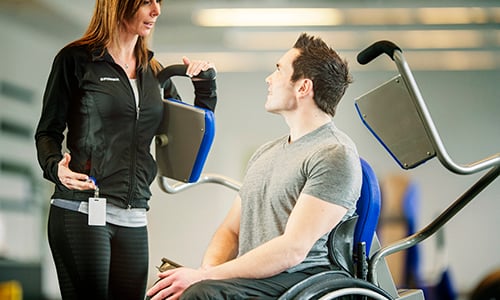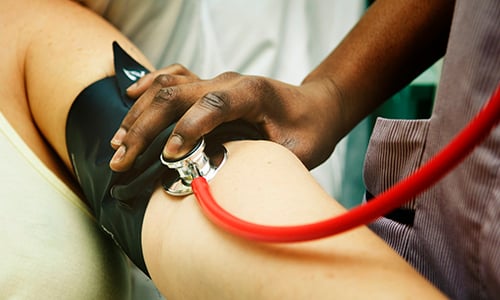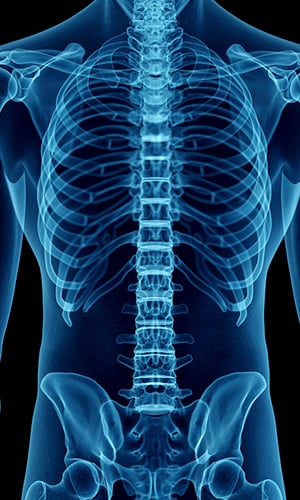It’s vital to begin a recovery and rehabilitation exercise program as soon as your medical team gives you the green light, for both short- and long-term benefits
The difficult months following a spinal cord injury comes with many formidable challenges, and it may feel like your life is out of your control. However, one crucial area within your control is the attitude, energy, and focus you devote to your all-important spinal cord injury recovery and rehabilitation process.
For many with paralysis, the initial weeks and months are a window of opportunity to optimize your spinal cord injury recovery and make significant positive inroads with your rehabilitation that may pay dividends not just today but well into your future.
Spinal cord injury recovery
In the first few days after your spinal cord injury, the hospital staff focuses on intensive emergency care — ensuring your survival, minimizing any further damage, and avoiding any serious and life-threatening secondary conditions and issues. This is the early acute stage and many of the procedures, treatments, and tests performed and medications given during the first 72 hours are designed to give your body the best chance of recovering (to the extent it can).
After you’ve recovered from surgery and swelling at the injury site has been reduced, your medical team will start to assess your body’s functionality. After this phase, you may or may not regain some sensation or movement below the site of the injury. As difficult as these first few days may be emotionally and physically, try to work well with all medical professionals to make accurate assessments so they can develop the optimal rehabilitation plan.
Collaborating with your medical team during these early days after your spinal cord injury will give you the best chance of recovering well. Although every case is unique, working together well may also potentially set yourself up for some gains in mobility as a result of your optimal rehabilitation program.
Spinal cord injury rehabilitation
Once you’re “out of the woods,” the first days after a spinal cord injury are also the most crucial to begin formal physical rehabilitation. Your initial program may begin while still at the hospital, focusing on preventing serious secondary complications, such as thromboembolism, skin breakdown, and respiratory issues. Bowel and bladder care are also key areas that must be immediately managed.
Depending on whether you have other medical issues related to your spinal cord injury, it’s also possible that you are discharged from the hospital within days to begin physical rehabilitation.
Physical therapy is the foundation of rehabilitation and is designed to improve motor functions through exercise. These activities help to retrain your brain and altered body to work in sync again so you can be as mobile as possible. Increased mobility is achieved through task-specific, repetitive movements and exercises that your physical therapists will take you through.
Here are some tips to help you get the most from your physical therapy:
· Trust your rehab team: Therapists know what exercises will be the most effective for your unique abilities as well as the location and severity of your spinal cord injury
· Follow direction and ask for guidance: Your rehab team is there to provide advice, so follow their specific direction when performing exercises and movements. If you’re not sure you are performing an exercise correctly, don’t be afraid to ask
· Do your homework: Most physical rehabilitation programs include exercises you can do on your own (or with some caregiver help) in the comfort of your own home. Be sure to integrate these exercises into your daily or weekly routine, as directed
· Stick with it: Rehabilitation can be hard on many levels. It can be physically painful at times and emotionally draining when you don’t see immediate results. Understand that rehabilitation takes time, so follow the three “Ps” — patience, persistence, and a positive attitude
Stay on course with occupational and psychological therapy
We’ve focused on your initial spinal cord injury recovery and physical rehabilitation, but it’s also important to work with an occupational therapist. He or she can help you learn to use assistive devices, such as wheelchairs. Occupational therapy can also help you with all the essential tasks and activities you do every day, such as brushing your teeth, grooming, getting dressed, and transferring out of your wheelchair.
Finally, don’t ignore your mental health. A psychotherapist can teach you coping techniques and tactics, particularly if you feel strong and negative emotions — anger, frustration, depression. This type of therapy can help you process your feelings and get to a better state of mind.
References:









